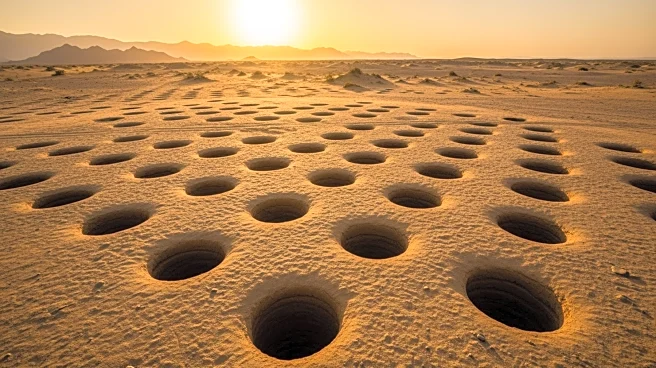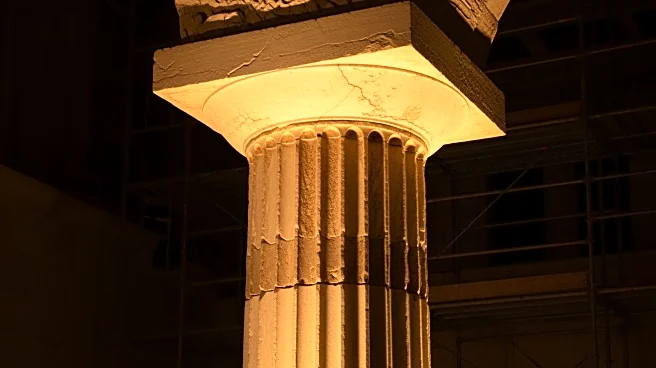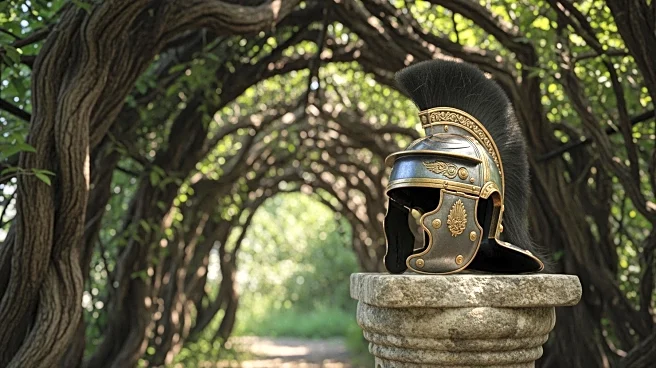What's Happening?
A bamboo cart has been discovered emerging from a melting glacier in the Swiss Alps, prompting scientific and historical investigation. The cart, found near the Splügen Pass, is constructed entirely from bamboo rods
and cord, a material not native to the region. Its purpose and origin remain a mystery, with experts speculating it could date back to the 20th century. The discovery has attracted public interest and speculation, as authorities seek historical leads to understand the cart's significance and provenance.
Why It's Important?
The emergence of the bamboo cart highlights the impact of climate change on revealing historical artifacts as glaciers retreat. This discovery provides a unique opportunity to explore lesser-known aspects of modern history and innovation. It underscores the importance of preserving historical records and understanding the cultural interactions in extreme environments. The cart's appearance challenges conventional historical narratives, prompting a reevaluation of past transportation and engineering practices in the Alps.
What's Next?
Further technical analysis of the bamboo cart is expected, including potential radiocarbon dating to determine its age and origin. Authorities are calling on the public for any historical records or photographs that might shed light on the cart's purpose. As glaciers continue to melt, more artifacts may be uncovered, offering insights into historical activities and environmental changes. The scientific community will likely focus on understanding the implications of these discoveries for climate science and historical research.
Beyond the Headlines
The bamboo cart's discovery raises questions about the intersection of climate change and historical preservation. As glaciers retreat, they may reveal artifacts that challenge existing historical narratives, offering new perspectives on human interaction with extreme environments. This phenomenon highlights the need for interdisciplinary collaboration between climate scientists, historians, and archaeologists to document and interpret these findings.











